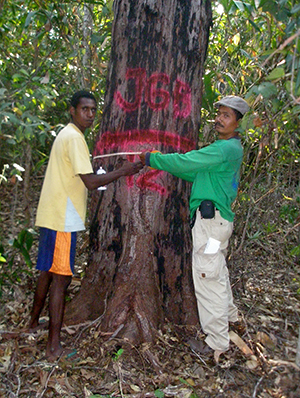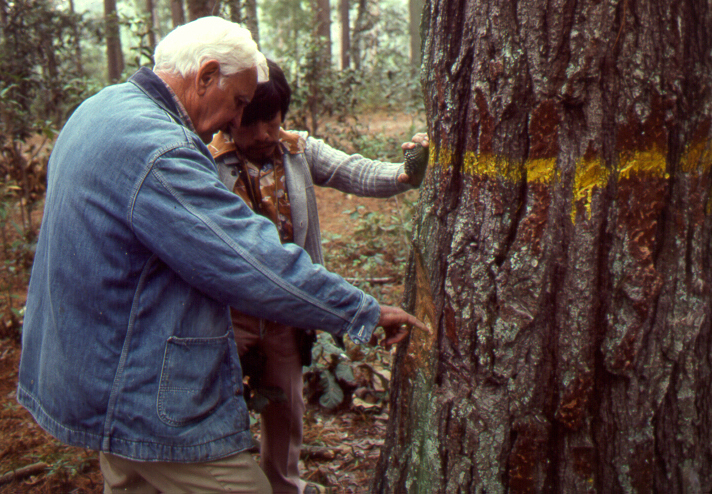Camcore History
In the late 1970s, Bruce Zobel (North Carolina State University), Carl Gallegos (then International Paper Company), Willy Mittak (then Food and Agriculture Organization) and Jesse Perry (retired, Rockefeller Foundation) decided to form an international organization dedicated to the conservation of tropical and subtropical trees in México and Central America. Dr. Mittak and Mr. Perry had years of experience in the region as forest taxonomists, and Drs. Zobel and Gallegos had important links to forest industry around the world.

An organization called Camcore (Central America and Mexico Coniferous Resources Cooperative) was formed in 1980 and made part of the Department of Forestry & Environmental Resources at North Carolina State University. It was unique in that the driving force behind its development was the private forest sector. Camcore demonstrates that the private sector, in collaboration with government agencies and universities, can make substantial contributions to tree breeding, gene conservation and environmental stewardship, while simultaneously providing economically sound forest management. Camcore has also attracted the support of foundations and granting agencies to assist with its conservation work.

Camcore makes seed collections in threatened forest stands and then plants these on members’ land in more protected areas in genetic field trials (called progeny tests) and conservation areas (called ex situ conservation banks or parks) with similar climates in countries around the world. Camcore professionals at NC State University analyze the data from the progeny trials and produce annual summaries to help members decide on what to grow. In 1980, Camcore had five founding members: Smurfit Kappa Cartón de Colombia, Aracruz Florestal (Brazil), International Paper Company (USA), the Weyerhaeuser Company (USA), and the National Seed Bank in Guatemala. Membership has grown to include 38 active, associate and honorary members on four continents.
Camcore seed collections expanded from Central America and Mexico to include Southeast Asia in 1994, the southern US in 2003 and Australia in 2010. Our program is now working with 50 different forest species and has sampled 11,000 trees in 500 locations. It has more than 2,500 hectares of genetic trials and conservation areas. It has the largest database on tropical and subtropical pines and non-Australian eucalypts in the world.

